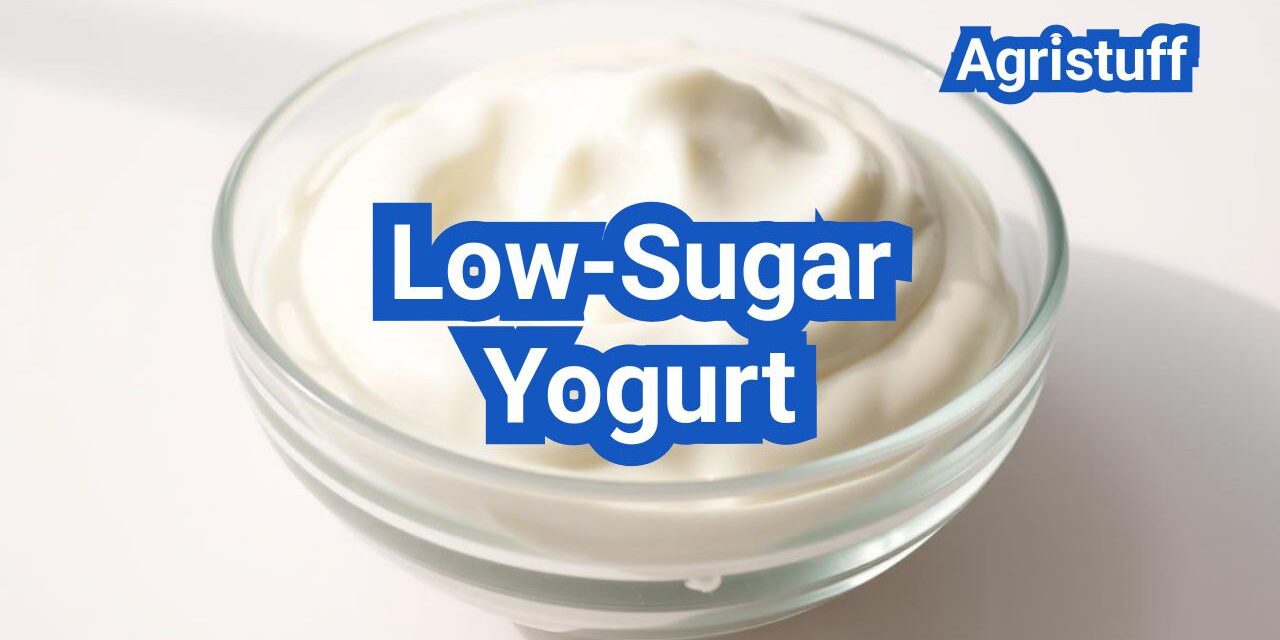This article does not contain medical advice
Choosing the right yogurt can be a daunting task, especially with the numerous options available in the market. With the rising awareness of the importance of reducing sugar intake, consumers are looking for unsweetened yogurt options that are not only delicious but also healthy.
The FDA emphasizes the importance of reading food labels to make informed dietary choices. When it comes to yogurt, understanding the Nutrition Facts label is crucial in selecting a product that meets your dietary needs. By knowing how to read yogurt labels, you can avoid added sugars and opt for yogurt with live active cultures.
Key Takeaways
- Understand the importance of reading yogurt labels to make informed choices.
- Learn how to identify added sugars in yogurt products.
- Discover the benefits of choosing unsweetened yogurt with live active cultures.
- Get tips on selecting the best low-sugar yogurt options.
- Explore the differences between various types of yogurt, such as Greek yogurt and skyr.
Understanding Yogurt Processing and Sugar Content
Understanding how yogurt is made is essential to grasping the differences between natural and added sugars in commercial yogurts. Yogurt manufacturing involves several key steps that impact its final sugar content.
How Yogurt is Manufactured
The production of yogurt begins with milk, which is pasteurized and then cooled before live cultures are added. These cultures ferment the lactose (milk sugar), producing lactic acid and causing the milk to curdle. The fermentation process not only thickens the yogurt but also reduces its lactose content, making it more easily digestible for some individuals.
Natural vs. Added Sugars in Commercial Yogurts
Commercial yogurts can contain both natural and added sugars. Natural sugars are those inherently present in milk, primarily lactose. Added sugars, on the other hand, are introduced during processing and can include a variety of sweeteners like sucrose, honey, or fruit concentrates. The FDA requires labeling of total sugars and added sugars on the Nutrition Facts panel, helping consumers make informed choices.
It’s crucial to differentiate between these types of sugars when selecting a yogurt, as added sugars can significantly increase the calorie content without providing nutritional benefits. Checking the ingredient list for added sweeteners can help consumers avoid unwanted sugars.
The Health Impact of High-Sugar Yogurts

The health impacts of high-sugar yogurts are multifaceted and concerning. Consuming yogurts with high sugar content can lead to various health issues, making them a dietary concern for many individuals.
Blood Sugar Management Concerns
High-sugar yogurts can significantly affect blood sugar management. The added sugars in these yogurts cause a spike in blood glucose levels, which can be particularly problematic for individuals with diabetes or those trying to manage their blood sugar levels.
Weight Management Challenges
Another concern with high-sugar yogurts is their impact on weight management. The extra calories from the added sugars can lead to weight gain if not balanced with diet and exercise. Moreover, the sugar can increase cravings for more unhealthy snacks.
Hidden Calories in Seemingly Healthy Options
Many consumers view yogurt as a healthy snack option, but high-sugar yogurts can contain a significant number of hidden calories. These calories can add up quickly, contributing to weight gain and other health issues.
| Yogurt Type | Sugar Content (g) | Calories |
|---|---|---|
| Low-Sugar Yogurt | 10 | 100 |
| High-Sugar Yogurt | 30 | 200 |
Understanding the health impacts of high-sugar yogurts is crucial for making informed dietary choices. By being aware of the sugar content and its effects on health, consumers can opt for healthier yogurt options.
Benefits of Choosing Low-Sugar Yogurt for Your Diet
Low-sugar yogurt offers numerous health benefits, making it an excellent addition to a balanced diet. Incorporating this nutritious food into your daily routine can lead to significant improvements in overall health and wellbeing. By choosing low-sugar yogurt, individuals can take a proactive step towards a healthier lifestyle.
Improved Metabolic Health Markers
Consuming low-sugar yogurt has been linked to improved metabolic health markers, including better blood sugar control and insulin sensitivity. This is particularly beneficial for individuals at risk of developing type 2 diabetes. Regular consumption can help regulate metabolic processes.
Better Weight Management Outcomes
Low-sugar yogurt can aid in weight management by providing a feeling of fullness and reducing the overall calorie intake. High-protein yogurts, in particular, can help in maintaining muscle mass while losing weight. This makes low-sugar yogurt an ideal snack for those looking to manage their weight effectively.
Enhanced Nutritional Profile and Satiety
Low-sugar yogurt is not only lower in calories but also rich in essential nutrients like calcium, protein, and probiotics. These nutrients contribute to a feeling of satiety, making it easier to stick to a healthy diet. The probiotics in yogurt also support gut health, enhancing overall nutritional wellbeing.
Dental Health Benefits
Choosing low-sugar yogurt can also have dental health benefits. The reduction in sugar intake helps minimize the risk of cavities and tooth decay. Additionally, the calcium content in yogurt supports the health of teeth and bones.
| Benefit | Description |
|---|---|
| Improved Metabolic Health | Better blood sugar control and insulin sensitivity |
| Weight Management | Aids in feeling full and reducing calorie intake |
| Nutritional Profile | Rich in calcium, protein, and probiotics |
| Dental Health | Reduces risk of cavities and supports teeth health |
How to Read Yogurt Labels Like a Nutrition Expert

The key to selecting the healthiest yogurt options lies in understanding the information provided on the labels. With so many choices available, navigating the yogurt aisle can be daunting, but being label-literate can make all the difference.
Decoding the Nutrition Facts Panel
The Nutrition Facts panel is a crucial resource for understanding what you’re consuming. It provides information on serving size, calories, and nutrient content, including sugars. The FDA recommends paying particular attention to the “Total Sugars” and “% Daily Value” for added sugars, as these can be indicators of high sugar content.
When examining the Nutrition Facts panel, look for yogurts with:
- Lower total sugar content
- Higher protein content
- Fewer ingredients overall
Identifying Sweeteners on Ingredient Lists
Ingredient lists can be lengthy and confusing, but they are essential for identifying added sweeteners. Ingredients are listed in order of quantity, so if a sweetener is near the top, that yogurt likely contains a significant amount of added sugar. Common sweeteners include sucrose, high fructose corn syrup, and honey.
To make informed choices, be aware of the various names for sugar and watch for:
- Sugar and its aliases (e.g., cane sugar, organic cane sugar)
- Syrups (e.g., corn syrup, agave syrup)
- Other sweeteners (e.g., honey, maple syrup)
Marketing Claims vs. Nutritional Reality
Marketing claims on yogurt packaging can be misleading. Terms like “all-natural” or “healthy” don’t always align with the nutritional content. It’s essential to look beyond the front-of-pack claims and examine the Nutrition Facts panel and ingredient list.
Some key marketing claims to be wary of include:
- “Low-fat” or “non-fat,” which may compensate with higher sugar content
- “Fruit-flavored,” which can indicate added sugars
- “Probiotic” or “contains live cultures,” which is beneficial but doesn’t excuse high sugar content
By becoming proficient in reading yogurt labels, consumers can make more informed choices that align with their dietary goals and preferences.
Common Sweeteners to Avoid in Commercial Yogurts
Understanding the types of sweeteners in commercial yogurts is key to making healthier choices. Many consumers are unaware of the various sweeteners added to yogurts, which can significantly impact their dietary intake.
Artificial Sweeteners and Their Potential Effects
Artificial sweeteners like aspartame, sucralose, and acesulfame potassium are commonly used in low-sugar yogurts. While they provide sweetness without calories, research has raised concerns about their potential health impacts. Some studies suggest that artificial sweeteners can confuse the body’s natural ability to regulate calorie intake, potentially leading to overeating and weight gain.
“The use of artificial sweeteners may contribute to metabolic disorders and alter the gut microbiota,” according to some research. Consumers should be cautious and consider the long-term effects of these sweeteners.
Sugar Alcohols in “Sugar-Free” Products
Sugar alcohols, such as xylitol, sorbitol, and maltitol, are used in “sugar-free” yogurts. While they don’t raise blood sugar levels, they can cause gastrointestinal issues in some individuals. Consuming high amounts of sugar alcohols can lead to bloating, gas, and diarrhea.
Natural Sweeteners That Still Impact Blood Sugar
Some yogurts are sweetened with natural alternatives like honey, maple syrup, or fruit purees. While these may seem like healthier options, they still contain sugars that can impact blood sugar levels. It’s essential to read labels carefully and understand that even natural sweeteners should be consumed in moderation.
As Dr. Sarah Johnson notes,
“Even natural sweeteners can add up in terms of sugar intake, so it’s crucial to monitor overall consumption.”
By being aware of these common sweeteners and their potential effects, consumers can make more informed choices when selecting yogurts.
The Best Low-Sugar Yogurt Options Available Today

Consumers now have access to a wide array of low-sugar yogurt varieties, from traditional to Greek and Icelandic-style options. This diversity caters to different tastes and dietary requirements, making it easier for individuals to incorporate low-sugar yogurt into their daily routines.
Plain Unsweetened Traditional Yogurts
Plain unsweetened traditional yogurts are an excellent choice for those looking to minimize their sugar intake. Brands like Daisy Pure & Natural and Organic Valley offer high-quality, unsweetened yogurts that can be flavored naturally with fruits or spices.
Greek and Strained Yogurt Varieties
Greek yogurt, known for its thick texture and high protein content, is a popular choice among health-conscious consumers. Fage Total and Siggi’s are notable brands offering low-sugar Greek yogurt options. Strained yogurts, similar to Greek yogurt, provide a creamy texture and are rich in protein.
Skyr and Icelandic-Style Options
Skyr, an Icelandic-style yogurt, is gaining popularity due to its thick, creamy texture and high protein content. Brands like Siggi’s and Icelandic Provisions offer skyr with minimal added sugar. Skyr is an excellent base for adding natural flavors without increasing sugar content.
Non-Dairy Low-Sugar Alternatives
For those with dairy intolerance or preferences, non-dairy low-sugar yogurt alternatives are available. Brands such as So Delicious and Kite Hill offer almond, coconut, or cashew-based yogurts with minimal sugar. These alternatives are perfect for those looking for dairy-free options without compromising on taste or nutritional value.
| Yogurt Type | Brand | Sugar Content (per serving) |
|---|---|---|
| Traditional | Daisy Pure & Natural | 0g |
| Greek | Fage Total | 0g |
| Skyr | Siggi’s | 4g |
| Non-Dairy | So Delicious | 1g |
In conclusion, the variety of low-sugar yogurt options available today makes it easier for consumers to choose a product that fits their dietary needs and preferences. Whether you prefer traditional, Greek, skyr, or non-dairy yogurts, there’s a low-sugar option available for everyone.
Greek Yogurt: A Protein-Rich Low-Sugar Option

With its rich nutritional profile, Greek yogurt stands out as a superior choice for those seeking to reduce sugar intake without sacrificing protein. Greek yogurt is known for its high protein content, which can help in satiety and muscle repair.
Nutritional Profile of Greek Yogurt
Greek yogurt is strained multiple times to remove excess whey, resulting in a thicker consistency and a more concentrated nutrient profile compared to regular yogurt. A typical serving of non-fat Greek yogurt contains around 15-20 grams of protein, making it an excellent source of protein. Additionally, Greek yogurt is rich in calcium, potassium, and probiotics, which support digestive health.
Top Low-Sugar Greek Yogurt Brands
Several brands offer low-sugar Greek yogurt options that are both nutritious and delicious. Some of the top brands include:
- Fage Total Greek Yogurt
- Chobani Non-Fat Plain Greek Yogurt
- Siggi’s Icelandic Yogurt
- Dannon Oikos Greek Yogurt
These brands are known for their commitment to using high-quality ingredients and minimal added sugars.
Whole Milk vs. Low-Fat Greek Yogurt Comparison
When choosing Greek yogurt, consumers often debate between whole milk and low-fat versions. Whole milk Greek yogurt contains more calories and saturated fat, but it may be more satiating. On the other hand, low-fat Greek yogurt is lower in calories and fat, making it a better option for those watching their weight. Ultimately, the choice depends on individual dietary needs and preferences.
In conclusion, Greek yogurt is a versatile and nutritious option that can fit into various diets. By choosing low-sugar versions and being mindful of the fat content, consumers can enjoy the benefits of Greek yogurt while maintaining a balanced diet.
Skyr: Understanding the Icelandic Low-Sugar Yogurt Alternative

In the quest for healthier yogurt options, Icelandic skyr stands out due to its unique nutritional profile. Skyr is a type of yogurt that originates from Iceland, known for its thick and creamy texture.
What Makes Skyr Different from Other Yogurts
Skyr is made using a straining process that removes excess whey, resulting in a thicker consistency and higher protein content compared to traditional yogurts. This process, combined with the use of non-fat milk, contributes to its low sugar content and rich nutritional profile.
Leading Low-Sugar Skyr Brands
Several brands offer skyr products that are low in sugar. Some of the leading brands include Siggi’s, Icelandic Provisions, and KeVita. These brands offer plain, unflavored skyr options that are free from added sugars.
Nutritional Benefits of Skyr vs. Regular Yogurt
Skyr offers several nutritional benefits over regular yogurt, including higher protein content, lower sugar levels, and a thicker texture that can enhance satiety. The table below compares the nutritional profiles of skyr and regular yogurt.
| Nutritional Component | Skyr (per 6 oz serving) | Regular Yogurt (per 6 oz serving) |
|---|---|---|
| Protein | 15-20 grams | 9-10 grams |
| Sugar | 6-8 grams | 10-15 grams |
| Calories | 100-150 | 100-150 |
Overall, skyr is a nutritious and low-sugar yogurt alternative that can be a valuable addition to a healthy diet.
Dietitian-Approved Low-Sugar Yogurt Brands in the U.S.

As consumers become more health-conscious, dietitians are recommending low-sugar yogurt brands that fit into a balanced diet. With numerous options available, choosing the right brand can be challenging. Here, we highlight dietitian-approved low-sugar yogurt brands across the U.S., categorized into national brands, specialty brands, and a comparison of their pricing.
National Brands with Low-Sugar Options
Several national brands have adapted to the low-sugar trend by offering varieties that are not only delicious but also healthier. Dannon and Yoplait are two such brands that have introduced low-sugar options. Dannon’s Light & Fit Greek yogurt and Yoplait’s Simply Wondersweet are popular choices among consumers looking to reduce their sugar intake.
Specialty and Regional Low-Sugar Options
Specialty brands like Siggi’s and regional favorites such as Cascade Fresh are also gaining popularity for their low-sugar content and high protein levels. Siggi’s Icelandic-style yogurt is known for its thick texture and minimal added sugars.
Price Comparison of Premium vs. Standard Options
The pricing of low-sugar yogurts varies significantly between premium and standard brands. The table below provides a comparison:
| Brand | Product | Price (USD) | Sugar Content (g) |
|---|---|---|---|
| Dannon | Light & Fit Greek Yogurt | 2.50 | 5 |
| Siggi’s | Icelandic-style Yogurt | 3.50 | 4 |
| Yoplait | Simply Wondersweet | 2.00 | 6 |
While premium brands like Siggi’s offer high-quality, low-sugar yogurts, standard brands like Dannon and Yoplait provide affordable alternatives. Consumers can choose based on their budget and dietary preferences.
Low-Sugar Yogurt for Special Dietary Needs

For individuals with specific dietary needs, choosing the right low-sugar yogurt is crucial for maintaining a healthy diet. Low-sugar yogurt can be a beneficial addition for those managing diabetes, individuals with lactose intolerance, and those following a keto diet.
Best Options for Diabetic Consumers
Diabetic consumers need to manage their blood sugar levels carefully. Low-sugar yogurt is an excellent option as it provides the nutritional benefits of yogurt without causing a significant spike in blood glucose. When selecting a low-sugar yogurt, look for products with less than 15g of sugar per serving and consider the carbohydrate content as well.
Some top brands for diabetic-friendly low-sugar yogurt include:
- Fage Total 0% Greek Yogurt
- Siggi’s Icelandic Yogurt (various flavors with minimal added sugar)
- Dannon Light & Fit Greek Yogurt (ensure the flavor is low in sugar)
Lactose-Free Low-Sugar Yogurt Alternatives
For those with lactose intolerance, lactose-free low-sugar yogurt alternatives are a great option. These yogurts are made by adding lactase, the enzyme that breaks down lactose, or by using non-dairy milk alternatives.
| Brand | Type | Sugar Content |
|---|---|---|
| DairyPure | Lactose-Free Yogurt | Less than 10g per serving |
| So Delicious | Non-Dairy Yogurt Alternative | Varied, but often low |
Keto-Friendly Yogurt Choices
Individuals following a keto diet require high-fat, low-carbohydrate foods. Full-fat Greek yogurt or keto-specific yogurt products can be suitable options. Ensure the yogurt is low in sugar and check the fat content to meet keto dietary requirements.
“Choosing the right yogurt can make a significant difference in managing dietary restrictions. Always check the nutrition label to ensure it fits within your dietary needs.” – Nutrition Expert
By carefully selecting low-sugar yogurt that meets specific dietary needs, individuals can enjoy the nutritional benefits of yogurt while adhering to their dietary requirements.
The Role of Probiotics in Low-Sugar Yogurt Products

Probiotics are live active cultures that contribute significantly to the health benefits associated with low-sugar yogurt consumption. These beneficial bacteria support gut health and immune function, making low-sugar yogurt a nutritious choice.
Live Active Cultures and Their Health Benefits
The presence of live active cultures in yogurt is crucial for its health benefits. Probiotics aid in digestion, enhance the immune system, and can even produce vitamins. Low-sugar yogurt with live active cultures offers a healthier alternative to sugary yogurts, supporting overall well-being.
How Processing Affects Probiotic Content
The processing of yogurt can significantly impact its probiotic content. Heat treatment during manufacturing can kill beneficial bacteria, reducing the product’s health benefits. Therefore, it’s essential to choose yogurts that are labeled as containing “live and active cultures.”
Identifying Yogurts with Optimal Probiotic Levels
To ensure you’re getting yogurt with optimal probiotic levels, look for products that are labeled with the “Live and Active Cultures” seal. This certification indicates that the yogurt contains a significant amount of probiotics. Additionally, check the ingredient list for specific strains of probiotic bacteria.
Creating Your Own Low-Sugar Yogurt at Home
Making low-sugar yogurt at home is easier than you think. With just a few basic ingredients and some simple equipment, you can control the amount of sugar that goes into your yogurt.
Basic Homemade Yogurt Recipe and Process
To start, you’ll need milk and a yogurt starter culture. You can use either cow’s milk or a non-dairy alternative like almond or soy milk. The process involves heating the milk to a specific temperature, cooling it, and then adding the starter culture. The mixture is then incubated at a warm temperature for several hours until it thickens.
Equipment and Ingredients Needed
The basic equipment required includes a saucepan, a thermometer, and a container for incubation. You can use a yogurt maker or a warm place in your kitchen, like the oven with the light on. The ingredients are milk and a yogurt starter, which can be found in most health food stores or online.
Straining Techniques for Greek-Style Results
To achieve a Greek-style yogurt, you can strain your homemade yogurt through a cheesecloth or a fine-mesh sieve. This process removes excess liquid, resulting in a thicker, creamier yogurt. You can adjust the straining time to achieve your desired consistency.
Natural Flavoring Methods Without Added Sugar
Instead of adding sugar, you can flavor your homemade yogurt with fresh or frozen fruits, nuts, or spices. Vanilla extract or cinnamon can add a delicious taste without any added sugar. Experiment with different combinations to find your favorite flavors.
Natural Ways to Enhance Low-Sugar Yogurt Flavor

Low-sugar yogurt doesn’t have to be bland; there are numerous ways to add flavor naturally. Consumers can easily enhance their low-sugar yogurt using a variety of ingredients without compromising their dietary goals.
Fresh and Frozen Fruit Additions
One of the simplest ways to add flavor to low-sugar yogurt is by incorporating fresh or frozen fruits. Fruits like berries, mango, or peaches not only add natural sweetness but also provide a boost of vitamins and antioxidants. For instance, mixing in some fresh strawberries or blueberries can create a delicious and healthy snack.
Spices, Extracts, and Flavor Enhancers
Spices and extracts can significantly enhance the flavor of low-sugar yogurt. Adding a dash of cinnamon, vanilla extract, or a pinch of nutmeg can transform the taste without adding sugar. These ingredients offer a range of flavors to suit different preferences.
Low-Glycemic Sweetener Alternatives
For those who still prefer a bit of sweetness, low-glycemic sweeteners like stevia or monk fruit can be used sparingly. These alternatives have a minimal impact on blood sugar levels, making them suitable for a low-sugar diet.
Savory Yogurt Flavor Combinations
Yogurt can also be enjoyed in savory forms. Adding herbs like dill or mint, or even a bit of garlic, can create a refreshing and tangy snack or side dish. Savory yogurt combinations are versatile and can be used in various culinary applications.
Incorporating Low-Sugar Yogurt into Daily Meals
Low-sugar yogurt is a versatile ingredient that can enhance various dishes, from breakfast to dinner and even snacks. Its creamy texture and tangy flavor make it an excellent addition to many recipes.
Breakfast Ideas and Parfait Recipes
Start your day with a nutritious breakfast by incorporating low-sugar yogurt into your meal. Layer it with fresh fruits, granola, and a drizzle of honey for a delicious parfait. You can also blend it with your favorite fruits and vegetables for a quick and healthy smoothie.
Savory Applications for Plain Yogurt
Plain low-sugar yogurt can be used in savory dishes as a substitute for sour cream or mayonnaise. Use it as a base for salad dressings, or as a marinade for grilled meats and vegetables. It adds a rich and creamy texture to soups and sauces without the extra sugar.
Yogurt as a Nutritious Snack Option
Low-sugar yogurt makes for a satisfying snack on its own or paired with other healthy foods. Combine it with nuts and seeds for added crunch, or with fruit for natural sweetness. It’s a great way to curb hunger between meals while keeping your sugar intake low.
Baking and Cooking Substitutions
You can use low-sugar yogurt as a substitute in baking and cooking to reduce the fat content and add moisture. It works well in recipes for cakes, muffins, and bread. Additionally, it can be used to tenderize meat in recipes, making it a versatile ingredient in both sweet and savory dishes.
By incorporating low-sugar yogurt into your daily meals, you can enjoy a range of health benefits while adding variety to your diet. Experiment with different recipes and uses to find your favorite ways to include this nutritious ingredient.
Common Mistakes When Shopping for “Healthy” Yogurts
Yogurt aisles are filled with options that, despite their healthy appearance, contain hidden sugars and unhealthy additives. Consumers often make critical errors when selecting yogurts, unknowingly choosing products that don’t align with their health goals.
Fruit-on-the-Bottom Sugar Content
One common mistake is opting for fruit-on-the-bottom yogurts, assuming they are a healthier choice. However, these yogurts often contain high amounts of added sugar. For instance, a seemingly healthy fruit-on-the-bottom yogurt can contain up to 20 grams of sugar per serving.
When “Low-Fat” Means “High-Sugar”
Another pitfall is choosing low-fat or non-fat yogurts, believing they are healthier. Manufacturers often compensate for the lack of fat by adding more sugar, making these yogurts high in sugar content. Always check the nutrition label to verify the sugar content.
Kid-Targeted Yogurts and Their Sugar Content
Kid-targeted yogurts are another area of concern. These yogurts are often high in sugar and artificial flavorings. Parents should be cautious and read labels carefully to avoid these unhealthy additives.
Portion Size Misunderstandings
Consumers also frequently misunderstand portion sizes. A yogurt cup might be labeled as a single serving, but it could contain multiple servings. Always check the serving size and calculate the total sugar content accordingly.
To make informed choices, consumers should be aware of these common mistakes. By carefully reading labels and understanding the implications of certain marketing terms, shoppers can select yogurts that truly support their health goals.
- Always check the nutrition label for sugar content.
- Be wary of marketing terms like “low-fat” and “kid-targeted.”
- Understand the serving size to accurately assess sugar intake.
Making Informed Yogurt Choices for Better Health
Making informed yogurt choices is crucial for achieving better health. By understanding how to read labels and choose low-sugar options, consumers can make healthier decisions. The key is to be aware of the sugar content in commercial yogurts and to opt for low-sugar yogurt alternatives.
Choosing low-sugar yogurt supports better health by reducing the risk of blood sugar management concerns and weight management challenges. It also promotes improved metabolic health markers and enhanced nutritional profiles. By applying the knowledge gained from this article, consumers can confidently select yogurts that align with their dietary needs.
Ultimately, informed yogurt choices lead to a healthier diet and better overall well-being. By being mindful of the ingredients and nutritional content, individuals can enjoy the benefits of yogurt while maintaining a balanced diet. Selecting low-sugar yogurt is a simple yet effective step towards achieving better health.
FAQ
What is the difference between natural and added sugars in yogurt?
Natural sugars are inherent in milk, whereas added sugars are introduced during processing. Understanding this difference is crucial for making informed choices.
How can I identify added sugars on yogurt labels?
Look for various names on the ingredient list, such as high fructose corn syrup, honey, or maple syrup, which indicate added sugars.
What are the health impacts of consuming high-sugar yogurts?
High-sugar yogurts can negatively impact blood sugar management, weight management, and overall health, contributing to conditions like obesity and diabetes.
What are the benefits of choosing low-sugar yogurt?
Low-sugar yogurt can improve metabolic health markers, aid in better weight management, enhance nutritional profiles, and support dental health.
How do I read yogurt labels effectively?
Understand the Nutrition Facts panel and ingredient list, and be aware of marketing claims that may not accurately reflect the product’s nutritional value.
What are some common sweeteners to avoid in commercial yogurts?
Artificial sweeteners, sugar alcohols, and some natural sweeteners can impact blood sugar levels and overall health; be aware of their presence in yogurt products.
What are some good low-sugar yogurt options?
Consider traditional, Greek, Icelandic-style yogurts, and non-dairy alternatives that are low in sugar and rich in nutrients.
Is Greek yogurt a good low-sugar option?
Yes, Greek yogurt is a popular choice for those seeking a high-protein, low-sugar yogurt option; various brands offer low-sugar Greek yogurt.
What is skyr, and is it a nutritious low-sugar yogurt option?
Skyr is an Icelandic-style yogurt that differs from traditional yogurt in its manufacturing process and nutritional profile; it is a nutritious and low-sugar option.
Can I make low-sugar yogurt at home?
Yes, creating low-sugar yogurt at home is straightforward; you can control the amount of sugar added and experiment with natural flavorings.
How can I enhance the flavor of low-sugar yogurt?
Use fresh or frozen fruit, spices, extracts, and low-glycemic sweetener alternatives to enhance flavor without adding sugar.
What are some common mistakes when shopping for “healthy” yogurts?
Overlooking sugar content in fruit-on-the-bottom yogurts, misunderstanding “low-fat” labeling, and ignoring portion sizes are common mistakes.
Are there low-sugar yogurt options suitable for special dietary needs?
Yes, there are lactose-free, keto-friendly, and diabetic-friendly low-sugar yogurt options available, catering to various dietary requirements.
Conclusion of: Low Sugar Yogurt
What we mean by low sugar yogurt (and what we don’t)
People often say “low sugar yogurt,” but in U.S. labeling law there’s no official FDA nutrient-content claim called “low sugar.” That matters when you’re choosing low sugar yogurt, because packages may instead use terms like “no sugar added,” “reduced sugar,” or “sugar free,” each with precise conditions. For example, “no sugar added” can only be used when no sugars (or ingredients that function as sugars) are added during processing; “sugar free” means <0.5 g sugars per serving. Understanding these definitions helps you find truly low sugar yogurt without marketing noise. FDA: 21 CFR §101.60 sugar claims
How fermentation lowers sugars in low sugar yogurt
Yogurt cultures consume part of milk’s natural sugar (lactose) during fermentation and convert it into lactic acid. That’s one reason plain, tangy yogurt is the easiest path to low sugar yogurt—less lactose remains than in the starting milk. Fermentation details vary by culture, time, and temperature, but the principle is the same: microbes reduce lactose to acid, texture firms up, and sweetness falls. Journal of Dairy Science: Yogurt fermentation
Why strained (Greek) styles make naturally low sugar yogurt
Greek and other strained styles remove whey after fermentation. Because lactose is water-soluble and largely carried in the whey, straining cuts sugars and carbohydrates while concentrating protein—another route to low sugar yogurt without adding sweeteners. The result: thicker texture, higher protein per spoonful, and fewer sugars per serving compared with unstrained yogurt. ScienceDirect Topic: Yogurt overview
Ultrafiltration: another path to naturally low sugar yogurt
Some Greek-style products use ultrafiltration to concentrate milk before fermenting. This membrane step removes part of the water and lactose, leading to a product that behaves like strained yogurt but can reduce sugar and boost protein with less acidic whey waste—useful if you’re seeking low sugar yogurt based on process, not sweeteners. NIH/PMC: Ultrafiltration and Greek-style yogurt
Lactose-free yogurts can taste sweet—yet still qualify as low sugar yogurt
“Lactose-free” yogurt isn’t necessarily high in sugar. Manufacturers add lactase enzyme to break lactose into glucose and galactose; these taste sweeter even if total “sugars” per serving don’t go up. That sweeter taste can make a plain, lactose-free cup feel indulgent while still fitting your low sugar yogurt goal—especially if it has 0 g added sugars. NIH/PMC: Low-lactose dairy—why it tastes sweeter
Label-reading 101: the surest way to pick low sugar yogurt
Flip the cup. “Total Sugars” includes natural milk sugar (lactose) plus any added sugars. “Includes X g Added Sugars” tells you how much sweetener was added. If you want genuine low sugar yogurt, compare brands by total sugars per serving and confirm “Includes 0 g Added Sugars.” Also check “serving size” (often 170 g or 3/4 cup). FDA: How to use the Nutrition Facts Label
“Added sugars” versus natural sugars in low sugar yogurt
For low sugar yogurt, prioritize 0 g added sugars. Natural sugars from milk are expected; the goal is limiting syrups and sweeteners added in processing. The FDA’s label now lists added sugars (grams + %DV), so a flavored cup might show 15 g Total Sugars, including 7 g Added Sugars—useful when choosing the best low sugar yogurt in seconds. FDA: Added Sugars on the Label
Ingredients that reveal hidden sugar—so you still get low sugar yogurt
Scan the ingredient list: sugar can hide behind many names. To protect your low sugar yogurt goal, watch for terms like cane sugar, brown rice syrup, honey, maple syrup, dextrose, fructose, sucrose, maltose, malt syrup, fruit juice concentrate, and more. A short list like “cultured milk, cream, live cultures” usually keeps sugars in check. USDA MyPlate: Names for Added Sugars
Sweeteners to avoid if you want “just dairy” low sugar yogurt
If your priority is low sugar yogurt without any non-sugar sweeteners, check for high-intensity sweeteners (acesulfame potassium, sucralose, aspartame, saccharin, neotame, advantame) and “natural” high-intensity options (purified stevia glycosides, monk fruit). They’re FDA-approved for safety, but avoiding them is easy when you choose truly plain, unsweetened cups. FDA: High-Intensity Sweeteners
What about sugar alcohols in “low sugar yogurt”?
Some “low sugar yogurt” products use sugar alcohols (like erythritol or xylitol) for sweetness with fewer calories. On U.S. labels, “Sugar Alcohol” is declared under Total Carbohydrate when a claim is made about sugars/sugar alcohols. If you prefer to avoid them, scan both the Nutrition Facts panel and the ingredients list. FDA: Sugar Alcohols & the Label (PDF)
Allulose: a special case to know when choosing low sugar yogurt
Allulose is a rare sugar allowed by FDA to be excluded from “Total Sugars” and “Added Sugars” on labels (it still counts in Total Carbohydrate at a lower calorie value). Some “zero sugar” or “low sugar yogurt” uses allulose; that’s fine if you accept alternative sweeteners, but not if you want only milk sugars. Always read ingredients. FDA In Brief: Allulose & Labeling
Independent sugar limits that can guide a low sugar yogurt choice
A useful benchmark: U.S. school meal standards now set a product-based added-sugar limit for yogurt of ≤12 g added sugars per 6 oz, effective in the 2025–26 school year. Even if you’re shopping for home, that threshold is a practical ceiling when picking flavored options that still feel like low sugar yogurt. USDA FNS: Added-Sugars Limits for Yogurt
Plain vs. flavored: how to spot naturally low sugar yogurt
Plain cups (regular, Greek, or skyr) commonly list 5–12 g total sugars per 170 g serving, almost all from milk. Many fruit-flavored cups push much higher due to added sugars or sweeteners. For reliable low sugar yogurt, start plain and add your own fruit if needed—then you control sweetness. FDA: Added Sugars explained
Why Greek yogurt often makes the best low sugar yogurt
Because straining removes whey (and the lactose dissolved in it), Greek yogurt typically shows fewer sugars per serving than unstrained yogurt, with more protein. For many shoppers, that ratio—lower sugars, higher protein—makes Greek styles a dependable base for low sugar yogurt snacks and breakfasts. ScienceDirect Topic: Yogurt & straining
Skyr and other concentrated styles as naturally low sugar yogurt
Traditional Icelandic skyr is strained or concentrated, too, so it behaves like Greek yogurt nutritionally: higher protein and fewer sugars per serving than regular yogurt. That makes skyr a convenient route to low sugar yogurt if you want a thick, spoonable texture with minimal sweetness. MyFoodData (USDA-sourced): Skyr nutrition
Added-sugar targets that support low sugar yogurt for families
For overall diet quality, keep added sugars to ≤10% of daily calories (the basis for the FDA’s 50 g/day Daily Value for adults), and many health groups advise even less. Choosing plain, unsweetened cups is the easiest way to make low sugar yogurt part of a kid-friendly routine. CDC: Added Sugars basics
Marketing claims vs. facts when comparing low sugar yogurt
Don’t rely on front-of-pack words like “light,” “keto,” or “no sugar added” to identify low sugar yogurt. The Nutrition Facts and ingredients list are what count. If a yogurt boasts “zero sugar,” check whether the sweetness actually comes from allulose or other high-intensity sweeteners—fine for some, not for others. FDA: Label changes & sugar claims
Choosing low sugar yogurt if you avoid any sweeteners at all
If your personal rule is “no sweeteners—period,” your best bet is plain yogurt with a very short ingredient list (milk + cultures). Skip products listing sucralose, acesulfame potassium, aspartame, stevia extracts, monk fruit, sugar alcohols, or allulose. That keeps low sugar yogurt truly dairy-only. FDA: Aspartame & Other Sweeteners
A quick shopping checklist for low sugar yogurt
1) Pick plain first. 2) Check serving size. 3) Target “Includes 0 g Added Sugars.” 4) Prefer Greek/skyr or ultrafiltered if you want extra protein with low sugar yogurt. 5) Ingredient list short and simple. 6) If choosing flavored, look for ≤12 g added sugars per 6 oz as a practical cap. FDA: Serving size—how to read it
Make your own flavor while keeping low sugar yogurt truly low
Start with plain low sugar yogurt and add fresh berries, diced peaches, cinnamon, vanilla extract, toasted nuts, or a spoon of chia. This keeps added sugars near zero while delivering texture and flavor. Once you train your palate, “plain + fruit” beats any premixed cup for a low sugar yogurt lifestyle. Harvard T.H. Chan: Food Label Guide
Are non-sugar sweeteners helpful in low sugar yogurt for weight control?
Opinions differ. FDA deems approved high-intensity sweeteners safe at usual intakes, but the World Health Organization advises against using non-sugar sweeteners for weight control because long-term benefits are uncertain. If your aim is metabolic health and minimal sweetness, choose plain, unsweetened low sugar yogurt. WHO: Non-sugar sweeteners guideline
Examples that fit a low sugar yogurt pattern (how to spot them)
When you browse shelves in the U.S., plain lowfat or whole-milk cups often show ~5–12 g total sugars per 170 g serving with 0 g added sugars; Greek and skyr are frequently on the lower end thanks to straining or concentration. Use the pattern above—not brand hype—to build your go-to low sugar yogurt list. FDA: Using the label to compare yogurts
Final thought
The simplest formula wins: plain + cultures + your own toppings. By focusing on fermentation, straining, and the Nutrition Facts panel, you can keep flavor high and added sugars low—making low sugar yogurt a dependable, everyday food that supports U.S. dietary guidance without relying on sweeteners. American Heart Association: Added sugars
Sources & References
- 21 CFR §101.60: Sugar-related claims
- FDA: Added Sugars on the Label
- FDA: How to Use the Nutrition Facts Label
- FDA: High-Intensity Sweeteners (approved list)
- FDA: Sugar Alcohols & Labeling (PDF)
- USDA FNS: Added-sugars limits for yogurt (K-12)
- USDA MyPlate: Names for Added Sugars
- CDC: Added Sugars—What they are
- WHO: Non-sugar sweeteners guideline (2023)
- NIH/PMC: Ultrafiltration & Greek-style yogurt
- ScienceDirect Topic: Yogurt (straining lowers carbs/sugars)
- NIH/PMC: Low-lactose dairy—sweetness after lactose hydrolysis
- MyFoodData (USDA-sourced): Skyr nutrition example
- AHA: Added sugars guidance










